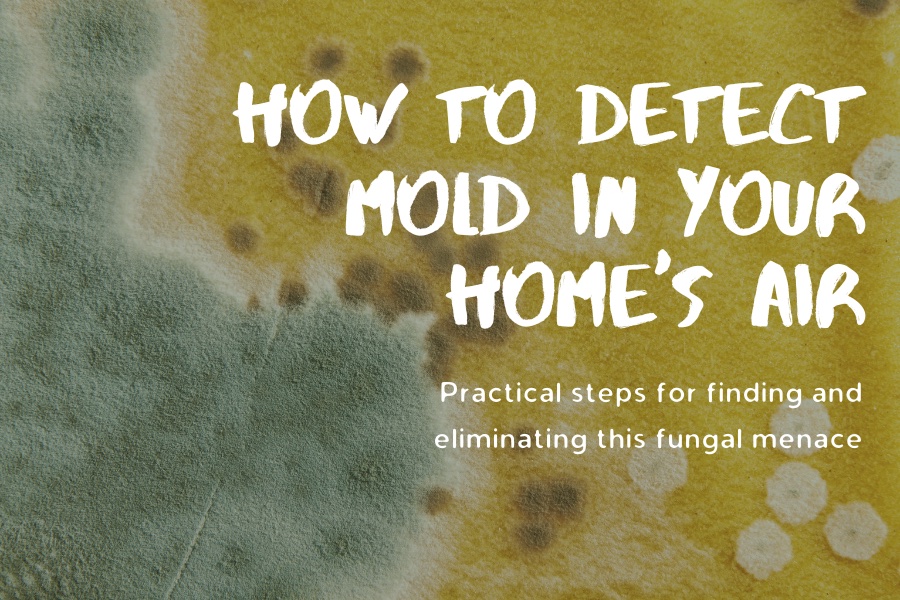
Let’s start with the obvious: you don’t want mold in your home’s air. Inhaling mold spores can trigger allergic reactions, cause asthma, or contribute to even worse health outcomes. While the prevailing research is still inconclusive, long-term exposure to mold indoors has also been linked to more serious life-threatening illnesses. But how do you detect mold in the air?
Step 1: Learn the Basics of Mold Growth
It helps to know a little bit about where and how mold appears in indoor spaces. Mold grows and thrives in damp, humid environments. Sometimes, this includes your home’s air.
If you live in a humid region, or have had water entry in your house, you need to be on high alert. You should be aware of which places in your home are most likely to trap moisture or have limited air flow. Generally speaking, anywhere wet, warm, and containing an organic source (i.e. wood, carpet, fabric, cardboard) is a candidate for mold growth.
If you suspect that mold is present somewhere in your home, you need to take action immediately. The longer you wait, the more it grows, the higher your exposure risk, and the harder it is to remove.
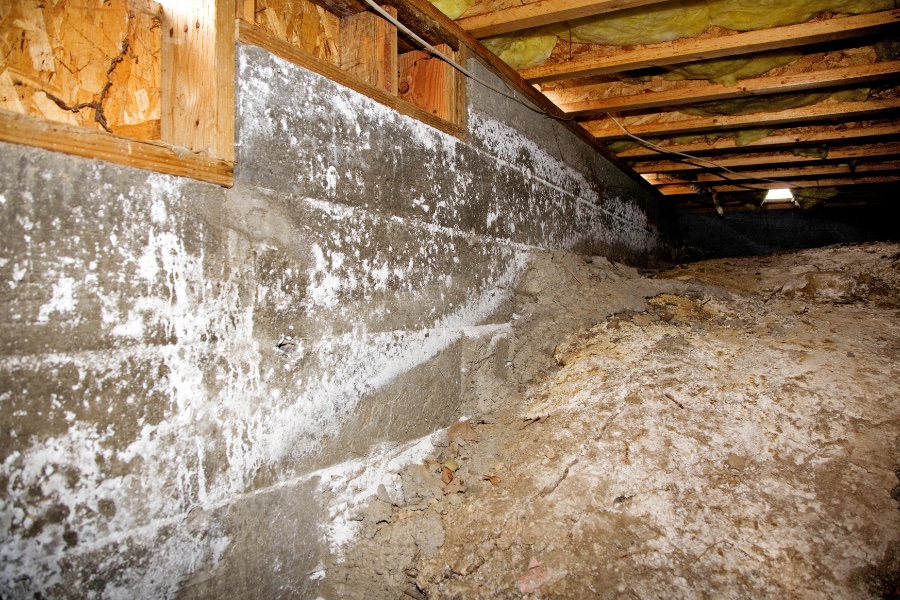
Step 2. Look for Obvious Signs of Mold
One of the first steps to detecting mold is checking for visible mold growth. Look for mold on walls, ceilings, and floors, especially in corners and crannies where ventilation is scarce. Prioritize bathrooms, kitchens, anywhere with a sink, and the basement.
It’s also a good idea to check your HVAC system. If mold has entered air ducts, filters, or drip pans, this can rapidly spread mold spores throughout your home’s air.
What does mold look like?
Mold usually appears in black or green spots. It’s very subtle when it first appears and can easily be mistaken for dirt or dust.
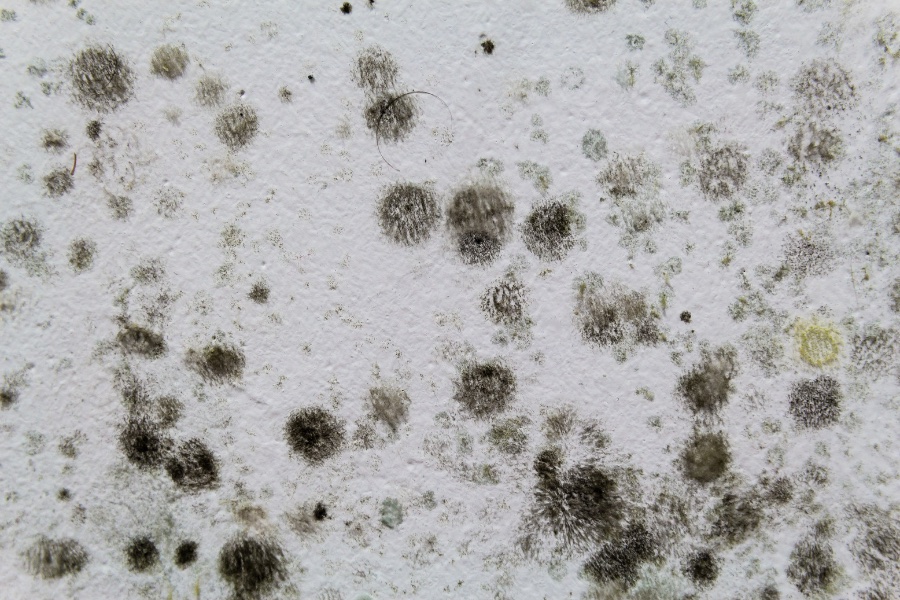
How does mold smell?
Mold typically has a musty or earthy odor reminiscent of wet organic matter. Some mold, especially early in its development, may have only a faint scent or no smell at all.
Which kind of mold is most dangerous?
Stachybotrys chartarum, commonly known as black mold, is frequently cited as posing potential health hazards. It produces mycotoxins, specifically trichothecenes, which have been linked to health conditions such as respiratory issues, allergic reactions, neurological effects, and immune system suppression.
However, it’s important to remember that even non-toxic mold can be dangerous. Any mold that releases spores into the air can create health problems.
Read more: Most Common Indoor Air Pollutants According to the EPA
Step 3. Address Water Damage
Mold loves moisture, so water damage is always one of the first places to check. Look for signs of water damage, such as stains on walls or ceilings, warped or buckled floors, and water stains on windows or around door frames.
Make sure to identify the source of any potential water damage. Take immediate action to stop any ongoing water entry. This may involve shutting off water valves, repairing plumbing issues, or patching leaks.
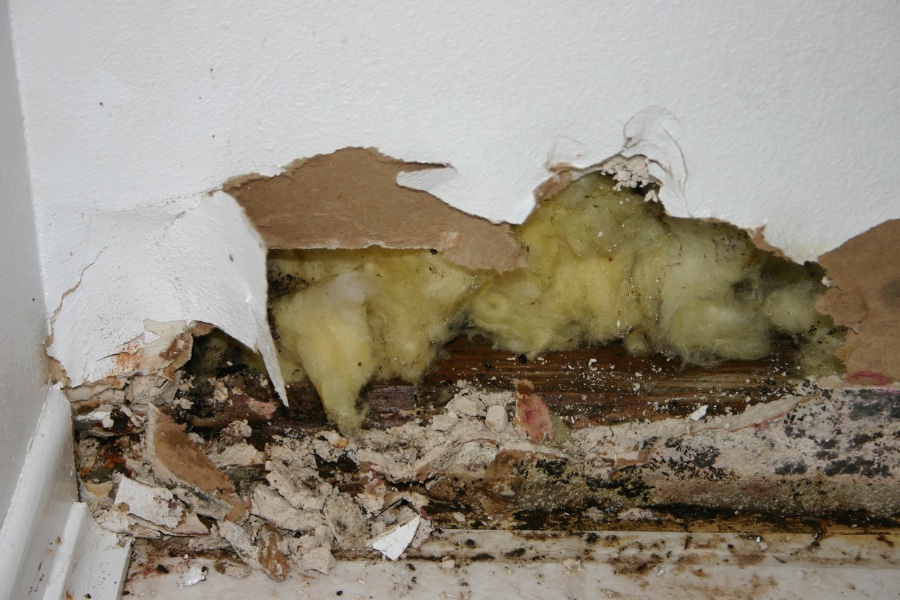
If you notice any signs of water damage, especially on drywall, it’s a good idea to open up a section and check beneath the surface. Mold often grows inside of walls where you can’t see it. But its spores can still get into the air you breathe through ventilation ducts.
Dry out areas with water damage using fans, dehumidifiers, and ventilation to circulate air. Get rid of any wet materials like carpets, furniture, and damaged drywall, as they can retain moisture and promote future mold growth.
Clean and disinfect water damaged surfaces, especially if there was sewage water involved. Use appropriate cleaning agents and follow recommended guidelines for disinfection.
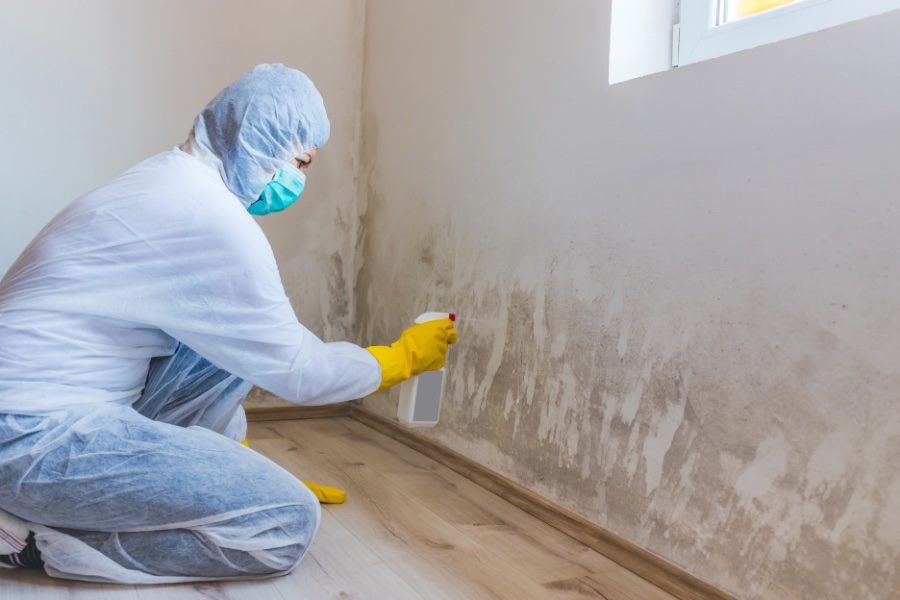
Step 4. Conduct a Mold Test
If you haven’t found visible signs but you still think mold is present somewhere, you need to take your mold detection efforts up a notch with a mold test.
There are several types of mold tests available, including air sampling, surface sampling, and bulk sampling. Air sampling involves taking air from inside your home and analyzing it for mold spores. Surface sampling tests a surface that may contain mold, such as a wall or floor. Bulk sampling involves taking a sample of a material that may contain mold, such as drywall or carpet.
Use a mold detection kit
A mold detection kit typically includes a test strip or petri dish that you place in your home for a set amount of time. After the allotted time passes, you send the sample to a lab for analysis. The lab will then provide you with a report detailing whether mold was detected in the sample and what type of mold it is.
If you choose to conduct a mold test, consider working with a mold remediation specialist (see Step 6 below).
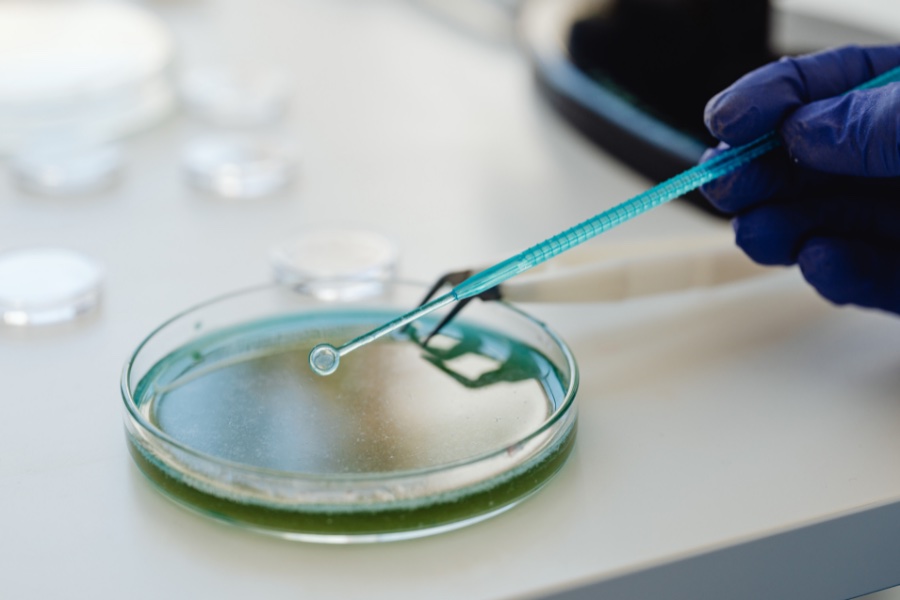
Step 5. Use an Air Quality Monitoring Device
Air quality monitors like IAQ use sensor technology to measure the contaminants in the ambient air. An indoor air quality monitor can detect when there is a high concentration of air particles indicative of mold growth. This is a reliable, real-time option for air sampling.
For example, IAQ analyzes a combination of factors such as humidity, temperature, air particle size, density, and light particles to alert users to the threats of mold. The device then uses machine learning to constantly improve data analyses and make more precise calculations on the likelihood mold is present.
It’s important to note, however, that a device like IAQ that measures air particles will not differentiate between different types of mold. Only a physical sample analyzed in a lab can confirm what kind of mold exists in your air.
Step 6. Hire a Professional Mold Inspector
If you’ve followed the steps above, one of two things likely happened. Either you discovered you have mold in your home or you didn’t. If it’s the former, you need to hire a professional mold inspector.
A mold inspector may be expensive but it will save you a lot of money in the long run. Professionals are more likely to find, identify, and remediate mold growth using specialized equipment. They save you from putting your own health at risk during the removal. They’re also more likely to get rid of all of it, while providing proper documentation on the location, extent, and types of mold present. This reporting is invaluable for insurance purposes and legal requirements, such as what is needed when you sell the property.
Prioritize Prevention
Preventing mold from growing is a lot easier than finding and getting rid of it. The best way to prevent mold growth is by managing humidity levels, rapidly addressing water entry or damage, balancing air flow and ventilation, caring for your HVAC system, and conducting routine checks of areas likely to develop a mold problem.
Most of all, consider investing in an air quality monitor to get an accurate reading of what’s in your indoor air.
Pay attention to your health
Remember, mold can cause or exacerbate respiratory issues, allergies, and skin irritation. Some common symptoms of mold exposure include coughing, wheezing, sneezing, runny nose, itchy eyes, and skin rashes. If you or someone in your family experiences these symptoms, you may have mold in your home’s air.
Detecting Mold: FAQs
Do I need to collect mold samples to detect mold in the air?
Not necessarily. A physical sample is the best way to get 100% confirmation of the presence and type of mold in your air. However, it’s also possible to detect mold with an air quality monitor (such as IAQ) or in some cases confirm it with your own senses (visible presence and obvious odor).
How do you know where mold is coming from?
Mold grows in damp, warm places, often on organic materials, carpet, wood, drywall, tile grout, and any surfaces that receive limited ventilation. Common places for mold growth include basements, bathrooms, behind walls and ceilings, kitchens, or any areas where there has been water damage. Mold is also identifiable by a musty, earthy odor. The stronger the odor, the closer you are to it.
Can air quality monitors detect mold?
Yes. Air quality monitors detect mold by measuring air particle volume and size, and other ambient conditions (such as humidity and temperature) that increase the likelihood of mold present in the air.
Can a dog detect mold in the air?
Dogs can be trained to detect mold in the air. Some mold detection specialists use dogs as a supplement to lab testing and professional inspection.







